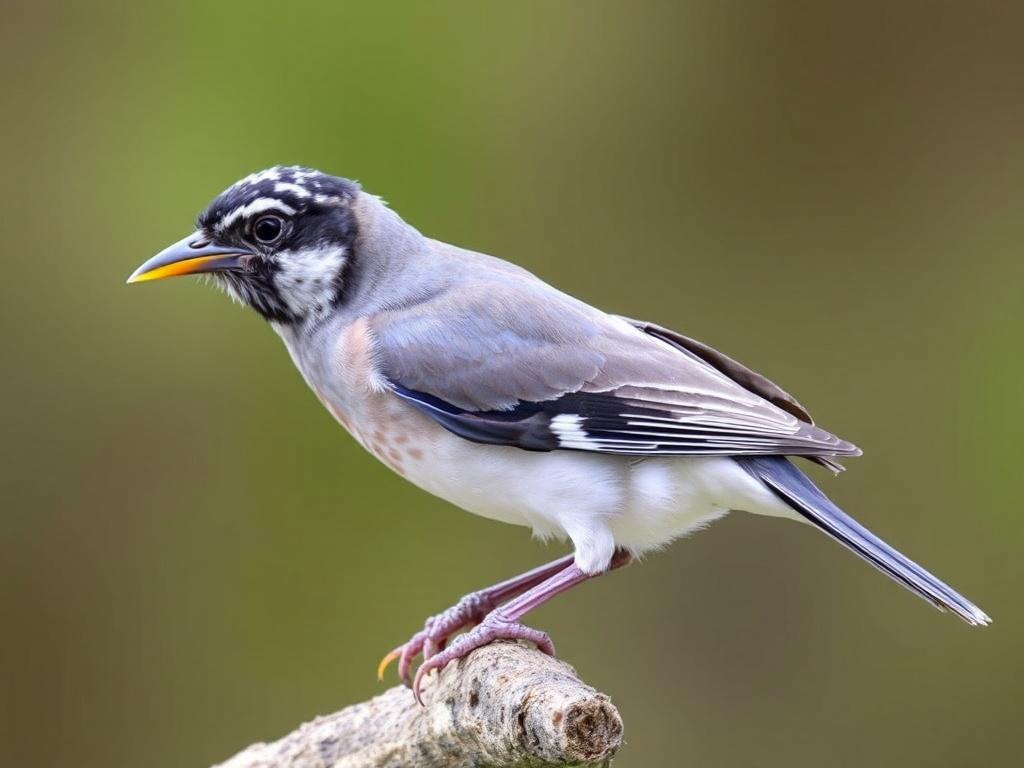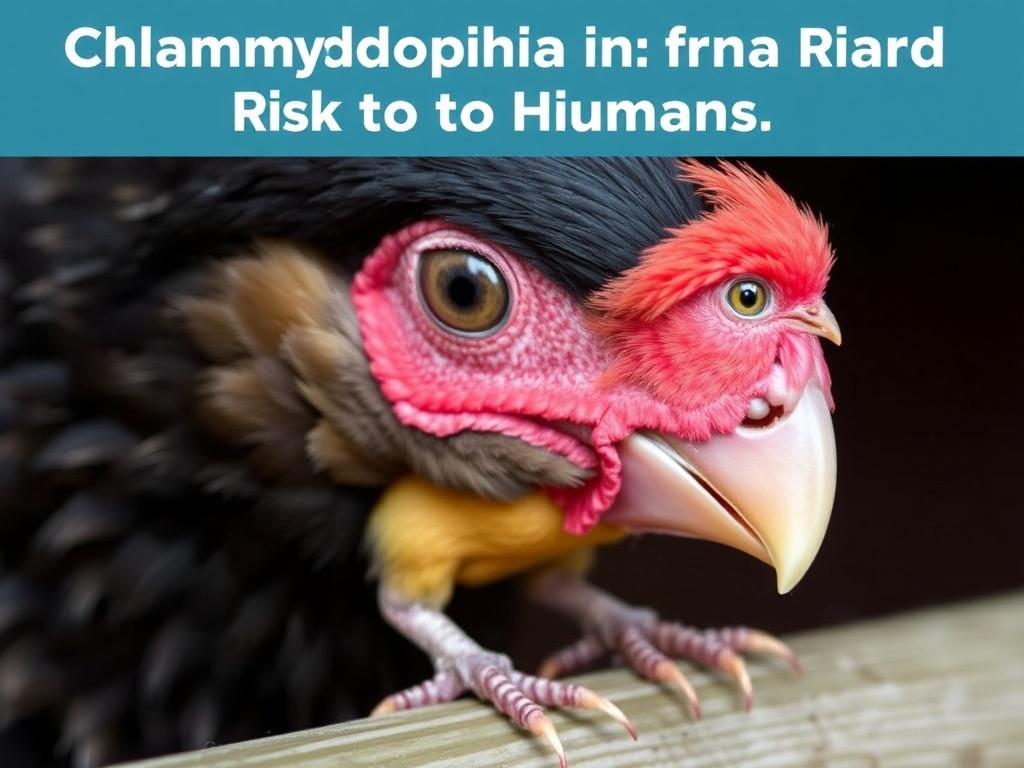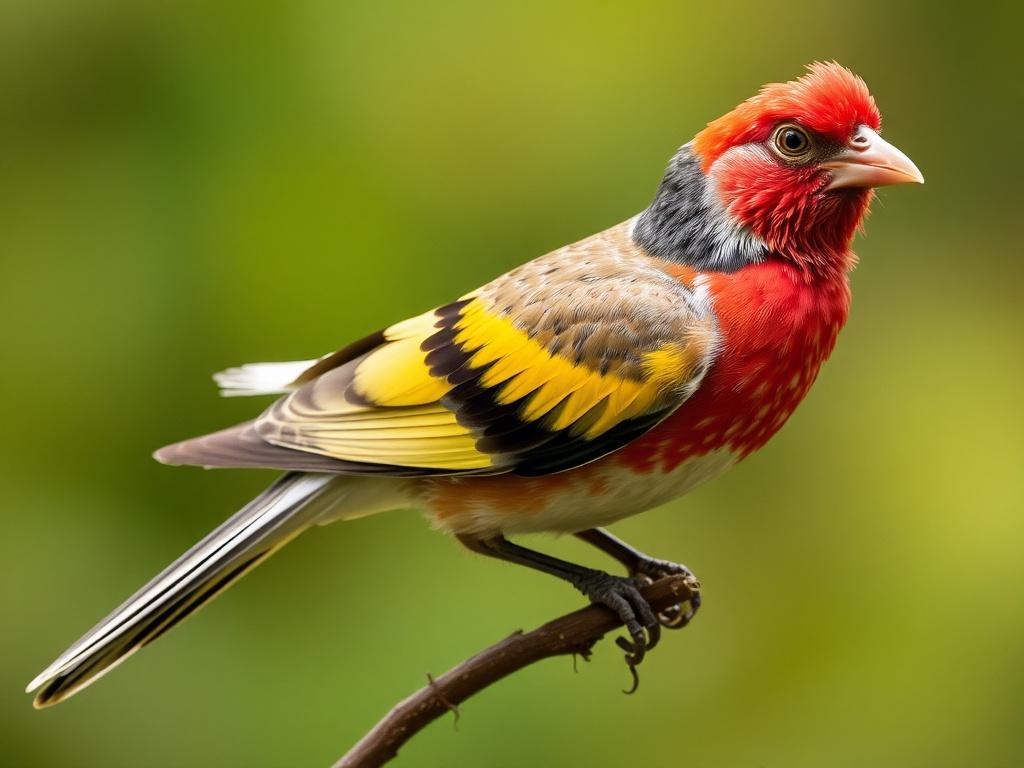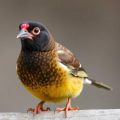Содержание
- What is Chlamydophila?
- How it spreads among birds
- What Chlamydophila looks like in birds
- How humans get infected
- Symptoms of psittacosis (in humans)
- Diagnosis: how do vets and doctors confirm it?
- Treatment options
- Prevention: reducing risk at home, in clinics, and on farms
- What to do if you suspect exposure or illness
- Occupational considerations and PPE
- Community and public health impact
- Real-world examples and lessons learned
- Special populations: pregnant people, the elderly, and the immunocompromised
- What current research and gaps tell us
- Practical tips for bird owners — everyday safety
- How veterinarians handle confirmed infection
- A final practical checklist
- Conclusion
SQLITE NOT INSTALLED
Chlamydophila — more commonly referred to today as Chlamydia psittaci — is a tiny bacterium with a big reputation for making bird lovers, veterinarians, and public health officials sit up and pay attention. If you keep birds, work around poultry, or simply enjoy feeding wild pigeons, understanding how this organism behaves in birds and how it can affect people is important. This article walks you through what Chlamydophila is, how it moves through flocks, the real risks it poses to humans, how to spot it, and practical steps for prevention and response. I’ll keep the language straightforward and the tone conversational so you can actually use this information, whether you’re a backyard bird enthusiast or someone responsible for a clinic or aviary.
What is Chlamydophila?
At its heart, Chlamydophila is a genus of bacteria that prefers living inside cells. The species most commonly associated with birds — and the one that can infect people — is Chlamydia psittaci. Historically the name Chlamydophila psittaci was used, but modern classifications tend to place it in the Chlamydia genus. That’s a detail you might see in older references, but either name points to the same zoonotic threat.
These bacteria have a lifecycle that requires a host cell to multiply, and they have evolved to infect respiratory and gastrointestinal tissues in birds. Infected birds can carry and shed the bacteria without always looking sick, which is one of the reasons psittacosis (the disease in humans) can catch people off-guard. The organism survives in dried droppings, secretions, and feathers, and it can be breathed in as contaminated dust — the main route of transmission to humans.
Why the fuss?
Because C. psittaci can jump from birds to people and cause an influenza-like illness that can be severe if not recognized and treated, it draws attention. It’s not the most common zoonosis, but the consequences in a few settings — veterinary clinics, pet shops, poultry farms, shelters, or homes with many birds — can be serious. The fact that the bacterium can be present in apparently healthy birds makes awareness and preventive practices crucial.
How it spreads among birds

Understanding transmission among birds helps explain how humans get exposed. The bacterium is largely spread by direct contact with infected birds or their secretions and droppings. Stress, crowding, poor ventilation, and concurrent infections make birds more likely to shed large numbers of organisms.
Birds shed Chlamydophila through:
- Respiratory secretions (coughing, sneezing)
- Feces and urine
- Feather dust and powder from species such as cockatiels and cockatoos
- Contaminated food, water, or shared perches and cages
Many species are susceptible: parrots, parakeets, cockatiels, macaws, pigeons, doves, and various wild and domestic birds, including chickens and turkeys. In commercial poultry operations, infection can spread rapidly if biosecurity is poor.
Common scenarios for bird-to-bird spread
- New birds introduced into an aviary without quarantine.
- Shared cages or communal feeding/watering systems.
- Transport, shows, or markets where different flocks mix.
- Stressful events such as relocation or illness that trigger shedding in a carrier bird.
What Chlamydophila looks like in birds
Clinical signs in birds vary widely. Some birds show dramatic illness, while others are silent carriers. Signs depend on the species, the bird’s immune status, and concurrent health issues.
| Bird Signs | Notes |
|---|---|
| Ruffled feathers, lethargy | Often the first general signs; can be subtle |
| Loss of appetite, weight loss | Chronic carriers may slowly decline |
| Respiratory signs (sneezing, nasal discharge) | Common in acute disease |
| Diarrhea, green droppings | Indicates digestive involvement |
| Conjunctivitis | Eye problems can occur with infection |
| Sudden death, especially in flocks | Possible in severe outbreaks |
Because signs overlap with many other avian diseases, laboratory testing is required to confirm Chlamydophila. If you have a sick bird, consult a veterinarian experienced in avian medicine and consider testing.
How humans get infected
Humans typically acquire C. psittaci by inhaling aerosols contaminated with the bacterium. That aerosol may come from dried droppings, feather dust, or respiratory secretions. Handling infected birds, cleaning cages, or working in pigeon lofts or poultry houses without adequate protection increases the risk.
Direct bird bites are a less common route, but contact with contaminated hands followed by touching your face, especially your nose or mouth, can also be a route for transmission. Anyone in close contact with birds — pet owners, breeders, people who rehabilitate wildlife, vets, veterinary technicians, pet shop employees, poultry workers, and shelter staff — is at higher risk.
Who is most at risk?
- People who keep multiple birds or work in bird-dense environments.
- Veterinary and shelter staff who handle sick birds.
- Poultry workers where biosecurity is lacking.
- Individuals with weakened immune systems, elderly people, and pregnant women — who may experience more severe disease.
Even casual exposure can lead to infection, though the risk is lower if you only occasionally see birds. Most cases in the general population are sporadic and preventable with basic precautions.
Symptoms of psittacosis (in humans)
Human illness ranges from mild flu-like symptoms to a serious pneumonia. Symptoms typically develop within a range spanning about 5 to 14 days after exposure, although incubation can be shorter or longer in some cases.
Common symptoms include:
- Fever and chills
- Headache and muscle aches
- Cough, which may progress to a severe, sometimes nonproductive cough
- Shortness of breath
- Fatigue and malaise
Some people develop complications such as hepatitis, endocarditis, or neurologic symptoms, although these are uncommon. Psittacosis can be particularly dangerous in people with weakened immune systems or those with underlying lung disease. It is important to remember that many respiratory illnesses can look similar, so if you suspect psittacosis after bird exposure, seek medical advice.
Table — Symptoms: Birds vs. Humans
| Feature | Birds | Humans |
|---|---|---|
| Respiratory signs | Sneezing, nasal discharge, coughing | Cough, shortness of breath, chest tightness |
| Systemic signs | Lethargy, weight loss, ruffled feathers | Fever, headache, muscle aches |
| Gastrointestinal | Diarrhea, green droppings | Nausea, but GI signs less common |
| Severe outcomes | Sudden death in flocks | Pneumonia, possible hospitalization, complications |
Diagnosis: how do vets and doctors confirm it?

Diagnosis requires laboratory testing because clinical signs alone are not specific. In birds, veterinarians collect swabs (choanal, cloacal) or fecal samples. In humans, specimens may include sputum, blood, or throat swabs. Testing options vary in sensitivity and availability.
Common diagnostic tests:
- Polymerase chain reaction (PCR): Detects bacterial DNA. Fast and sensitive, useful in acute cases.
- Serology (blood antibody tests): Detects the body’s immune response to the organism. Useful but requires paired samples to see rising antibodies.
- Culture: Rarely done outside specialized labs because the organism requires biosafety level precautions and culture is hazardous.
Each test has pros and cons. PCR is fast and increasingly available, but a negative test doesn’t always rule out infection, especially if sampling is poor or the test is done late. Serology can help confirm exposure but may not be diagnostic early in illness. If psittacosis is suspected, clinicians often start treatment based on exposure history and clinical signs rather than waiting for confirmatory lab results.
Safety note on testing
Because culturing Chlamydophila is risky, only specialized public health or reference labs undertake culture. This is a technical detail you don’t need to worry about as a bird owner, but it explains why clinicians usually rely on PCR and serology.
Treatment options
Both birds and humans respond well to appropriate antibiotic therapy, but treatment regimens differ.
Treatment in humans:
- Doxycycline is the first-line treatment for adults — commonly 100 mg twice daily for at least 10–14 days after clinical improvement. Some recommendations extend treatment to 14–21 days depending on severity and response.
- For pregnant women and people who cannot take tetracyclines, macrolides (such as azithromycin) are often used.
- Hospitalization and supportive care may be required for severe pneumonia or complications.
Treatment in birds:
- Tetracyclines, especially doxycycline, are commonly used to treat birds. Treatment duration tends to be long — many protocols recommend 45 days to ensure all stages of the bacterium are cleared.
- Medication is usually administered via food, water, or directly by a veterinarian.
- Infected birds should be isolated and treated under veterinary supervision; follow-up testing may be indicated before returning birds to group aviaries.
Do not attempt to treat suspected infection in humans or birds without consulting a qualified professional. For humans, a clinician will tailor treatment to age, pregnancy status, and other health factors. For birds, an avian veterinarian will recommend the correct dosing, duration, and any supportive care needed.
Prevention: reducing risk at home, in clinics, and on farms
Preventing Chlamydophila infection is largely about limiting exposure to contaminated dust, droppings, and secretions, and following good hygiene and biosecurity.
Practical prevention steps:
- Quarantine new birds for at least 30 days and have them examined and tested by an avian veterinarian before joining other birds.
- Keep cages and aviaries clean. Remove droppings frequently and use wet-cleaning methods rather than dry sweeping to avoid aerosolizing dust.
- Use personal protective equipment (PPE) when cleaning cages, handling sick birds, or working with many birds. This includes masks (at least a surgical mask; N95/FFP2 is better in higher-risk settings), gloves, and eye protection.
- Ensure good ventilation in housing areas to reduce airborne dust concentrations.
- Avoid touching your face while handling birds and wash hands thoroughly after handling birds or cleaning cages.
- Educate staff and family members about the risks and signs of illness in birds and people.
- If a bird is sick or dies suddenly, consult your veterinarian before attempting extensive cleaning or handling; coordinate testing and safe disposal if needed.
Table — Basic biosecurity checklist
| Action | Why it matters |
|---|---|
| Quarantine new birds | Prevents introducing carriers into established collections |
| Frequent wet cleaning | Reduces aerosolization of infectious dust |
| Use PPE | Protects people from inhaling contaminated particles |
| Ventilation and airflow control | Dilutes airborne pathogens and reduces concentration |
| Prompt veterinary care | Allows early detection and treatment to reduce shedding |
What to do if you suspect exposure or illness

If you or someone in your household develops fever and respiratory symptoms after handling birds, tell your healthcare provider about the exposure. Early recognition is important because psittacosis responds well to appropriate antibiotics, but delay can lead to more severe disease.
Guidance for bird owners:
- Isolate the sick bird and call your avian veterinarian immediately for advice and testing.
- Avoid cleaning the bird’s cage or handling the bird yourself if you are sick, pregnant, or immunocompromised — ask someone healthy to assist using PPE.
- If you develop symptoms, seek medical care and inform clinicians about your bird exposure so they can consider psittacosis in their differential diagnosis.
- Follow veterinary recommendations regarding treatment, isolation, and follow-up testing of the bird(s).
- If an outbreak occurs in a larger setting (shelter, pet shop, farm), contact local public health authorities who can advise on testing, reporting, and control measures.
Many countries and regions treat psittacosis as a reportable disease. If multiple people become ill, or if a confirmed case is linked to a commercial operation or pet shop, public health should be notified so they can help investigate and contain the outbreak. Reporting rules vary, so check local guidelines.
Occupational considerations and PPE
Certain professions face higher exposure risk. Employers should include psittacosis in their workplace risk assessments where birds are present. Appropriate measures include training, routine use of PPE for risky tasks, and policies to prevent sick workers from handling birds.
Recommended PPE and workplace controls:
- Respiratory protection: N95 or equivalent respirators when cleaning cages, handling many birds, or during outbreak response. Surgical masks offer some protection for casual contact but are less protective when aerosolized dust is likely.
- Gloves and protective clothing: Prevents contamination of clothing and skin.
- Eye protection: Reduces risk when splashes are possible.
- Hygiene facilities: Handwashing stations and policies to avoid eating or drinking in bird-handling areas.
- Engineering controls: Local exhaust ventilation and dust suppression methods.
Training should emphasize that PPE is a last line of defense — good housing design, cleaning practices, and quarantine are primary prevention steps.
Community and public health impact
Psittacosis is usually seen as sporadic cases or small clusters, but larger outbreaks have occurred. For example, cases have been linked to pet stores, aviaries, and pigeon populations. Because the disease can be transmitted from birds to humans via dust, even people who do not handle birds directly (such as visitors to an aviary) may be exposed if the environment is contaminated.
Public health responses typically include:
- Case finding and testing of suspected human cases.
- Advice and testing for birds involved, often coordinating with veterinary services.
- Guidance on disinfection, temporary closure of affected facilities, and safe handling of birds.
- Communication to potentially exposed people about symptoms and steps to take.
Early coordination between animal health and human health authorities — the “One Health” approach — is particularly useful with zoonotic pathogens like C. psittaci.
Real-world examples and lessons learned
Outbreak investigations emphasize a few persistent themes: delayed recognition, inadequate quarantine of new birds, and poor cleaning methods that generate contaminated dust. A common pattern involves a single new bird brought to a shop or show that appears healthy but is shedding bacteria under stress, leading to multiple human cases among workers or visitors.
Lessons learned include:
- Quarantine and testing of new birds can stop transmission before it starts.
- Using wet-cleaning techniques dramatically reduces aerosolized particles compared with dry sweeping.
- Clear signage and training at public-facing bird facilities reduce risk to visitors who may be unaware of potential hazards.
- Early veterinary and public health involvement shortens outbreak duration and limits human illness.
Knowing these practical lessons helps bird owners and facility managers reduce the chance of becoming part of an outbreak story.
Special populations: pregnant people, the elderly, and the immunocompromised
Some groups are at greater risk of severe disease. Pregnant individuals are classically advised to avoid handling birds that might carry C. psittaci because many infections are treated with doxycycline — an antibiotic typically avoided in pregnancy. Alternatives like macrolides are used, but the decision to treat and which drug to use should be made by a physician familiar with both obstetric and infectious disease considerations.
Older adults and immunocompromised individuals may have more severe respiratory disease if infected. For these populations, minimizing exposure, ensuring that household birds are healthy and under veterinary care, and using PPE when in contact with birds are sensible precautions.
What current research and gaps tell us
Research into avian chlamydiosis and psittacosis addresses improved diagnostics, the ecology of the bacterium in wild bird populations, and better prevention strategies. Key gaps include:
- Understanding the true prevalence of asymptomatic carriage in various bird species.
- Improving rapid, widely available diagnostics for both veterinary and human medicine.
- Clear guidelines on the best strategies for flock management and decontamination in different settings.
As diagnostic methods like PCR become more accessible, surveillance may detect more cases, which in turn will inform public health guidance. Continued collaboration between veterinarians, clinicians, and epidemiologists will help fill these gaps.
Practical tips for bird owners — everyday safety
If you keep birds, small changes can greatly lower risk for you and your family:
- Quarantine and vet-check new birds before mixing them with others.
- Use a damp cloth, mop, or vacuum with HEPA filtration to clean up droppings instead of dry sweeping.
- Change and wash clothing after handling many birds, and use gloves when cleaning cages.
- Keep perches, toys, and food/water dishes clean and avoid overcrowding cages.
- Watch for subtle changes in behavior or appetite in birds and seek veterinary attention early.
- Inform your clinician about bird exposure if you develop fever and respiratory symptoms — it may change diagnosis and therapy.
These simple measures don’t eliminate risk but reduce it significantly.
How veterinarians handle confirmed infection
Veterinarians managing confirmed or suspected cases often combine treatment with longer-term control measures:
- Isolate infected birds and begin antibiotic therapy under supervision.
- Use targeted cleaning and disinfection protocols after appropriate waiting periods and with attention to safety for both humans and birds.
- Perform follow-up testing to confirm clearance before returning birds to communal areas.
- Advise owners about human health risks and when to seek medical attention.
Professional veterinary guidance is essential because avian treatment regimens and environmental decontamination require specifics that depend on species, housing, and local regulations.
A final practical checklist
If you want a quick reference to reduce risk, here’s a short checklist you can save:
- Quarantine new birds for 30 days and get a vet exam.
- Clean with damp methods; avoid dry sweeping.
- Use PPE for cleaning and in outbreak situations.
- Inform your healthcare provider about bird exposure if you’re sick.
- Seek veterinary care early for sick birds and follow treatment and testing plans.
Conclusion
Chlamydophila in birds — the organism behind psittacosis — is a real but manageable zoonotic risk: not everyone who keeps or meets birds will become ill, but awareness and sensible practices make a big difference. Quarantine, good hygiene, careful cleaning methods, proper use of PPE, and prompt veterinary and medical care when illness arises are the pillars of prevention. If you own birds, work with them, or visit bird-dense environments, the best approach is respectful caution: treat birds as beloved companions but also as animals that can harbor pathogens, and take straightforward steps to protect both their health and yours.





